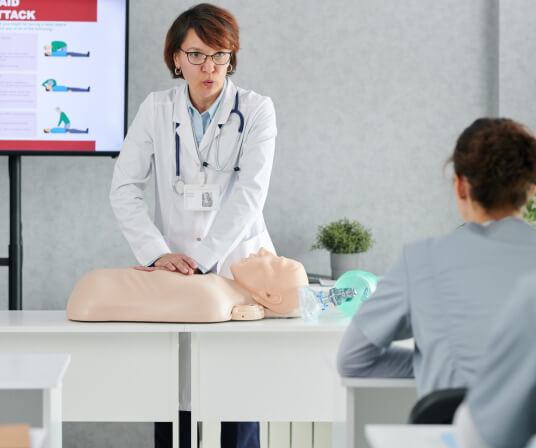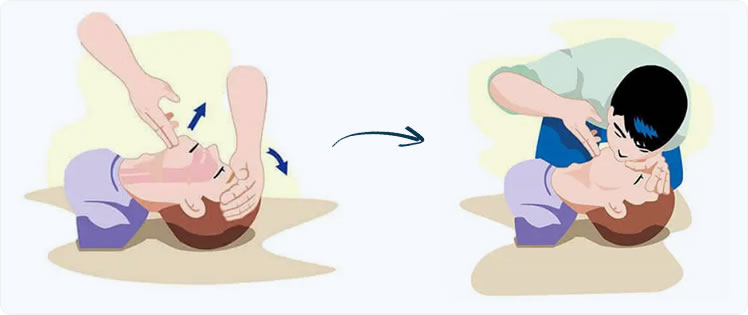CPR, First Aid, BLS, ACLS, PALS certifications.


$49.95 $59.85
| Chapters | CE Credits | Validity | Cost | Duration | ECC | Exam Attempts | Wallet Card |
|---|---|---|---|---|---|---|---|
| 32 | — | 2 Years | $49.95 | 2 Hrs | Compliant | Unlimited | Download/Print/Mail |
Once you’ve completed 30 chest compressions, the next step is to open the airway and provide two rescue breaths. If you’re able to give breaths, it can improve the victim’s chances of survival.

Continue with cycles of 30 compressions and 2 breaths, at a rate of 100 to 120 compressions per minute, until EMS or an Automated External Defibrillator (AED) arrives—or the person begins to breathe on their own.
If the person starts breathing, carefully roll them onto their side in the recovery position. This helps drain fluids from the mouth. While moving the person, be mindful of the neck, head, and back.
Note (2021 Interim Guidance): Due to COVID-19, some responders may be hesitant to give rescue breaths. In such cases, performing hands-only Cardiopulmonary Resuscitation (CPR) is recommended.
This chapter equips you with key rescue breathing techniques as part of your Healthcare Provider CPR/AED and First Aid Combo Course Online.